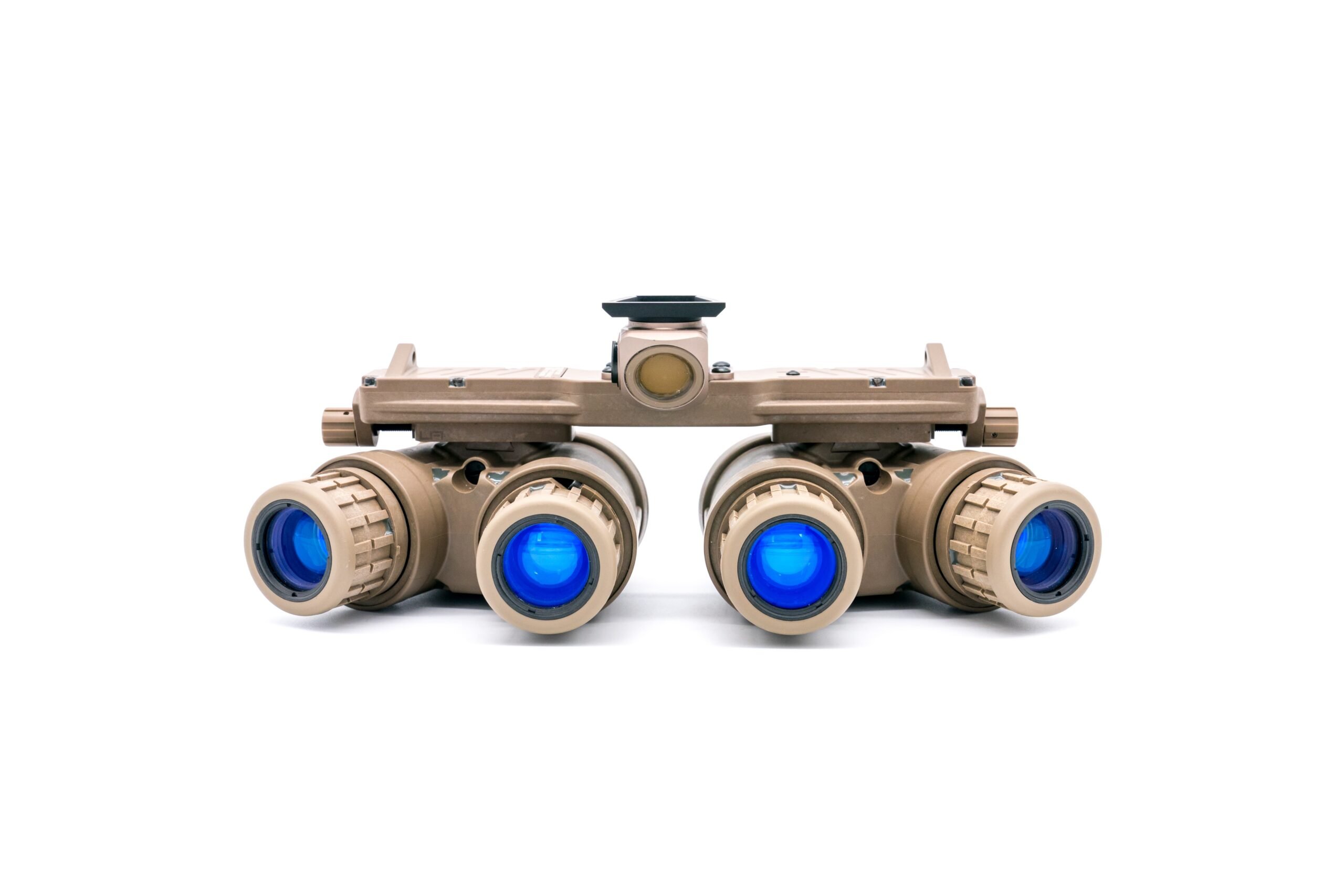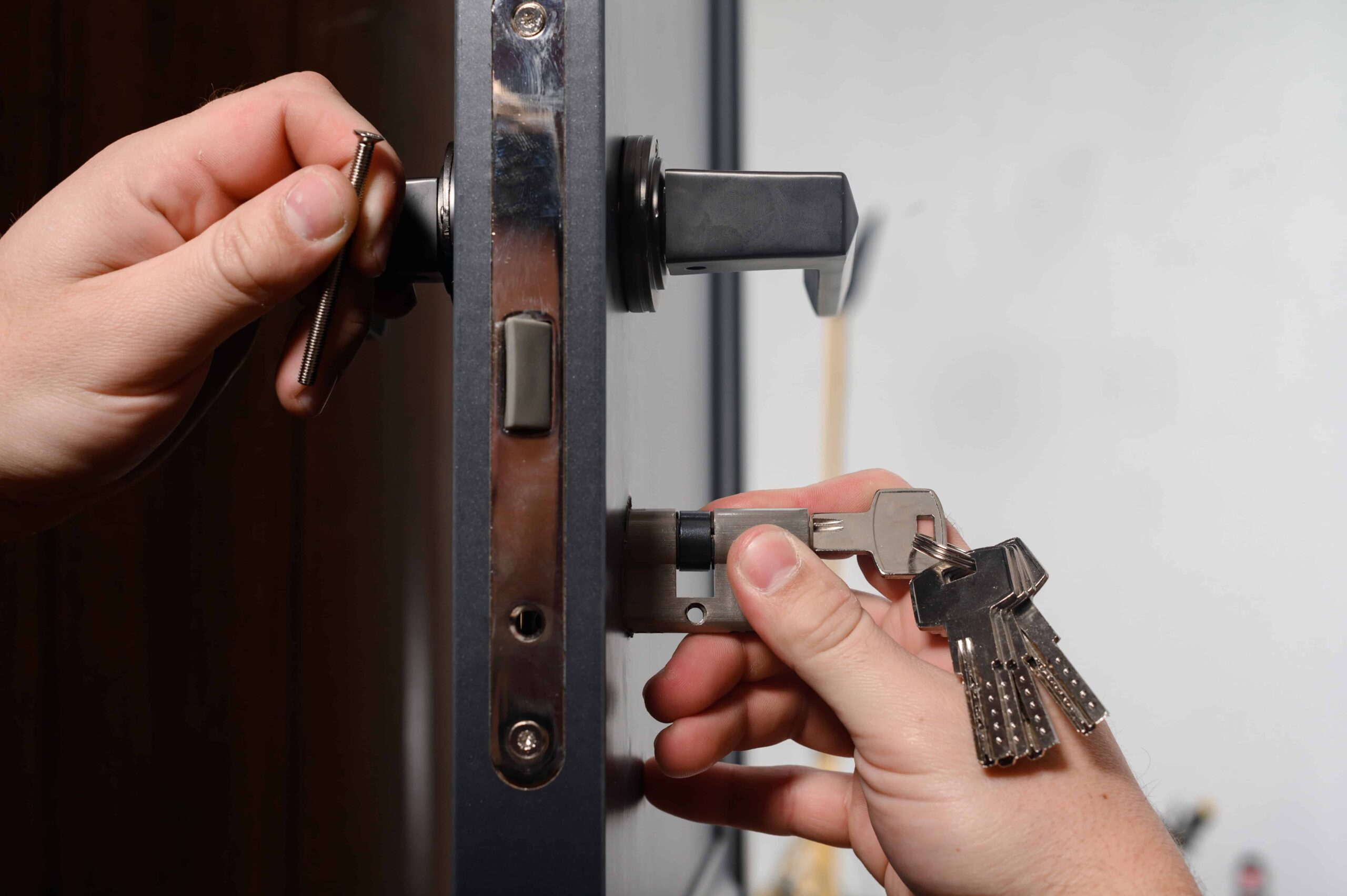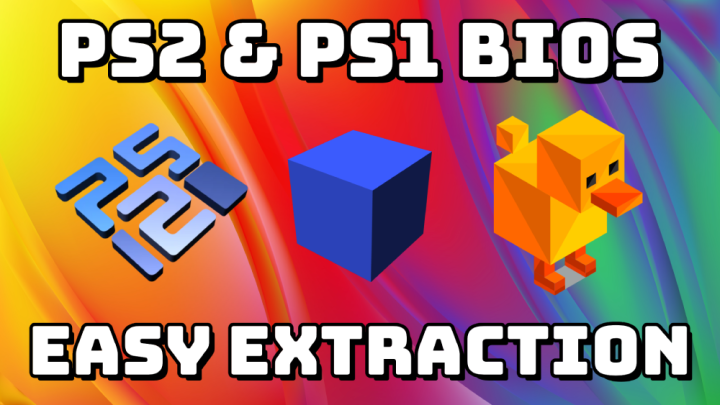What Are Quad NODs?
Quad NODs are advanced night vision goggles that utilize four image intensifier tubes—two per eye—to provide an expanded field of view (FOV) of up to 97 degrees or more, compared to the 40-degree FOV offered by traditional dual-tube devices. This panoramic vision is achieved by positioning two tubes forward-facing and two angled outward, allowing users to see more of their surroundings without constant head movement212.
Originally developed for U.S. Special Operations Forces, Quad NODs like the GPNVG-18 (Ground Panoramic Night Vision Goggles) have become iconic in modern military operations. Their design not only enhances peripheral vision but also improves depth perception, making them indispensable in dynamic and high-stakes environments1217.
The Technology Behind Quad NODs
At the heart of Quad NODs lies the image intensifier tube, a critical component that amplifies ambient light—whether from moonlight, starlight, or infrared sources—into a visible image. Each of the four tubes in Quad NODs is responsible for a specific portion of the FOV:
- Forward-Facing Tubes: These provide the central 40-degree FOV, similar to traditional night vision devices.
- Angled Tubes: Positioned slightly outward, these expand the user’s peripheral vision, covering an additional 57 degrees of FOV12.
Most Quad NODs use Gen 3 or Gen 4 image intensifier tubes, which offer superior performance in extremely low-light conditions. Gen 3 tubes, for instance, are equipped with auto-gating technology to prevent temporary “white-out” effects from bright light sources, while Gen 4 tubes provide even better resolution and clarity1217.
Advantages of Quad NODs
- Wider Field of View: The most significant advantage of Quad NODs is their expanded FOV, which reduces the need for constant head movement and enhances situational awareness. This is particularly crucial in urban combat or fast-paced operations where threats can emerge from multiple angles212.
- Enhanced Depth Perception: With four tubes working in tandem, Quad NODs provide superior depth perception, enabling users to accurately judge distances and navigate complex terrains with ease27.
- Improved Target Detection: The panoramic vision allows users to detect moving objects or threats outside their direct line of sight, significantly improving reaction times in critical situations12.
- Reduced Fatigue: Traditional night vision devices often cause neck strain due to the need for constant scanning. Quad NODs alleviate this issue by providing a more comprehensive view, reducing physical strain during prolonged missions12.
- Versatility in Dynamic Environments: Whether in vehicle-based operations, airborne missions, or close-quarters combat, Quad NODs excel in dynamic environments, offering unmatched performance and reliability1217.
Applications of Quad NODs
Quad NODs are primarily used by military and special operations forces, but their applications extend to law enforcement, search-and-rescue operations, and even civilian activities like hunting and wildlife observation.
- Military and Special Operations: Elite units such as Navy SEALs and Army Rangers rely on Quad NODs for nighttime raids, reconnaissance missions, and airborne operations. The expanded FOV is particularly useful in close-quarters combat, where quick target acquisition is essential1217.
- Law Enforcement: SWAT teams and tactical units use Quad NODs for high-risk operations like hostage rescues and drug raids, where superior night vision capabilities can mean the difference between success and failure12.
- Search and Rescue: In remote or disaster-stricken areas, Quad NODs enhance the ability of search teams to locate missing persons and navigate treacherous terrain after dark12.
- Civilian Use: Outdoor enthusiasts and hunters benefit from the enhanced visibility and performance of Quad NODs, making them ideal for nighttime activities712.
Challenges and Limitations
Despite their numerous advantages, Quad NODs are not without challenges:
- Weight and Bulk: The use of four image intensifier tubes makes Quad NODs heavier and bulkier than traditional devices, which can lead to discomfort and fatigue during extended use1217.
- High Cost: Quad NODs are expensive, with prices often exceeding $40,000, making them inaccessible to most civilians and limiting their adoption to well-funded military and law enforcement units1017.
- Battery Life: The increased power consumption of four tubes results in shorter battery life, requiring users to carry extra batteries for long missions12.
- Training Requirements: Effective use of Quad NODs requires specialized training to adapt to the wider FOV and interpret the panoramic image accurately12.
The Future of Quad NODs
As night vision technology continues to evolve, Quad NODs are expected to become lighter, more affordable, and more versatile. Innovations such as augmented reality (AR) overlays and integration with heads-up displays (HUDs) could further enhance their capabilities, making them even more indispensable in both military and civilian applications512.
Conclusion
Quad NODs represent a revolutionary advancement in night vision technology, offering unparalleled situational awareness, enhanced depth perception, and a panoramic field of view that redefines how we operate in low-light environments. While challenges like weight, cost, and training requirements remain, the benefits of Quad NODs far outweigh the drawbacks, making them a critical tool for professionals who need to perform at their best when the sun goes down. As technology continues to evolve, Quad NODs will undoubtedly remain at the forefront of night vision innovation, shaping the future of tactical operations and beyond










